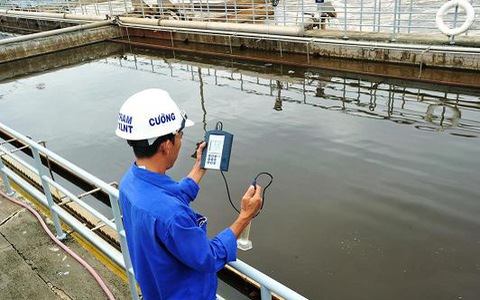Domestic wastewater pollution in major urban areas is quite severe. This is a consequence of unscientific urban planning, climate change, and the limited capacity of wastewater treatment systems. These issues have drawn public attention, with hopes for effective solutions from the government, relevant authorities, and enterprises.
1. Current Status of Urban Domestic Wastewater Treatment and Its Consequences
The rapid urbanization in Vietnam has exposed significant inadequacies in domestic wastewater drainage and treatment. In addition, insufficient funding, underdeveloped technical infrastructure, and the use of outdated technologies have resulted in untreated domestic wastewater being directly discharged into the environment, causing severe environmental damage.
It is estimated that approximately 80%–90% of wastewater is discharged untreated into the environment. The current rate of treated domestic wastewater in urban areas stands at only 13%. If this trend continues, in the next 20–30 years, future generations may face a scarcity of clean water for daily use.

2. Analysis of the Causes
According to expert analysis, the process of urbanization has not been accompanied by the development of adequate infrastructure, leading to significant challenges in collecting and treating domestic wastewater. This is a long-term issue. In most urban areas in Vietnam, combined sewer systems are still prevalent, while regulations mandate separate systems for wastewater and stormwater.
Furthermore, the increasing density of construction, mixed-use developments, and aging, undersized, and complex pipeline systems fail to meet growing demands and require significant upgrades and expansions. Collecting and treating wastewater necessitates a substantial investment, yet accessing domestic and foreign funding sources remains challenging.
3. Directions and Solutions
Currently, various mechanisms, policies, regulations, and guidelines for managing and treating urban domestic wastewater have been completed and issued, aligning with the Party’s resolutions on environmental protection.
However, building adequate wastewater treatment infrastructure demands enormous investment. Preliminary calculations estimate a minimum of 20 billion USD is needed. Therefore, a comprehensive review is required, from policies and mechanisms to water sources and technology.
Technology: Historically, Vietnam has relied on ODA loans and adopted foreign technologies. Moving forward, if financial resources can be secured domestically, local technological capabilities can be developed. However, the application of appropriate technology must vary by region and locality.

Mobilizing Resources: It is necessary to revisit existing mechanisms and policies to unlock national resources and foster international cooperation. Shifting away from public utility operations to encourage private investment and privatization of water supply companies is crucial. Policies should evolve toward socialization, following the “polluter pays” principle, while ensuring this sector generates sustainable revenue.
Currently, the Ministry of Construction is beginning to revise technical infrastructure regulations and promote investment in drainage systems. It has proposed amendments to decrees on technical infrastructure, water supply and drainage, and urban greenery. The Ministry is also preparing to submit a Water Supply and Drainage Law to the National Assembly for approval in 2023–2024 to achieve synchronized infrastructure development.
Compiled by NGO

 Tiếng Việt
Tiếng Việt





